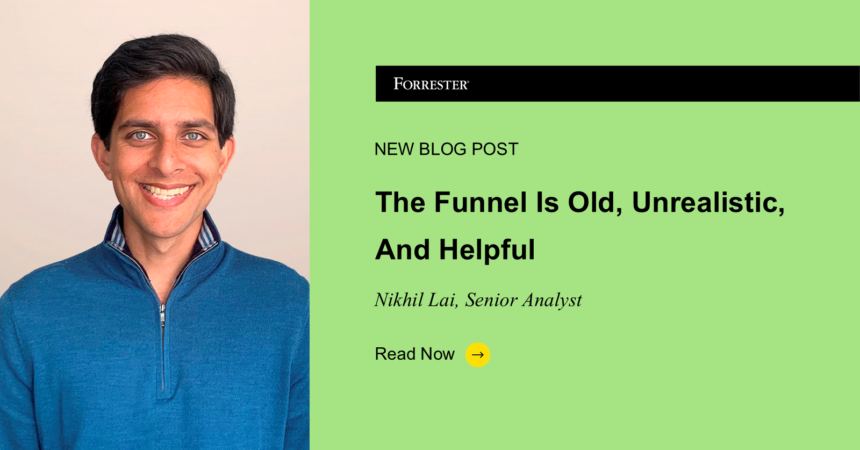In 1898, Elias St. Elmo Lewis developed the advertising funnel. He was the Association of National Advertisers’ first president and, along with the funnel, developed the AIDA model, an acronym that models a consumer’s journey from awareness to interest, desire, and then action.
More than 125 years after its conception, brand marketers are still planning media according to the funnel and AIDA. They map KPIs to stages of the funnel, even though buyers’ journeys aren’t linear, and attempt to reconcile upper- and lower-funnel activities. Many advertisers believe that brands grow by maximizing awareness, which has halo effects on interest and desire. They measure awareness’s impact on interest by monitoring branded search activity, but results are often inconclusive. Despite forcing false choices between “brand” and “performance,” the funnel and AIDA persist as helpful, albeit flawed, heuristics.
Lewis’ funnel and model of consumer behavior apply to a theoretical, idealized world. Actually, customers’ attention spreads thin across search, social, mobile, TV, radio, print, email, and in-store advertising, among other channels. Consumers constantly, frenetically traverse channels, devices, and stages of the funnel as they search, shop, and get entertained. No two buyers’ journeys are alike, and as signals dim in vulnerable ecosystems, journeys are increasingly difficult to predict and measure. Knowing whether someone is about to go from interest to action or awareness to desire is, practically, a guessing game.
Give Your Great-Great-Grandparent’s Funnel A 21st-Century Upgrade
Rather than try to (quixotically) master linear funnels, marketers must cultivate deep, unique customer understanding and compelling creative. Customer understanding, based on strong first-, second-, and third-party signals, and compelling creative gleaned from creative intelligence are full-funnel advertising’s underpinnings. They result in clearly understanding how awareness-generating exposures impact branded search and in brand-response creative that simultaneously builds retargeting pools and stimulates direct responses.
Full-funnel advertising is much easier described than done. To bring it to life, we interviewed Universal Technical Institute (UTI) and its agency, NP Digital. UTI is a 60-year-old trade school growing across the US. It provides the transportation and energy industries with skilled technicians, welders, and machine operators among other tradespeople. Erik Butler, UTI’s director of performance media, and Kurt Eddy, VP of marketing, partner with digital marketing agency NP Digital to generate awareness, consideration, leads, and enrollments.
Universal Technical Institute Partnered With NP Digital To Deploy Full-Funnel Advertising
Our case study with UTI and NP Digital, Universal Technical Institute Uses Customer Understanding To Enhance Customer Acquisition, explains the brand’s journey from search and social-centric advertising dependent on last-click attribution to a 104% increase in branded search clicks and 145% more conversions across its omnichannel mix. Its team tried correlating impressions from upper-funnel campaigns with leads generated from UTI’s lower funnel, but results were unclear. As they mastered full-funnel advertising, UTI’s visibility into various channels’ incremental costs, indicated by Google’s measurement and UTI’s media mix model, helps UTI’s team decide where to spend its next dollar. Our case explains how consolidating advertising technologies, deepening moats of first-party data, and developing more compelling creative yields strong, durable results.
To learn more about full-funnel advertising, feel free to reach out.







